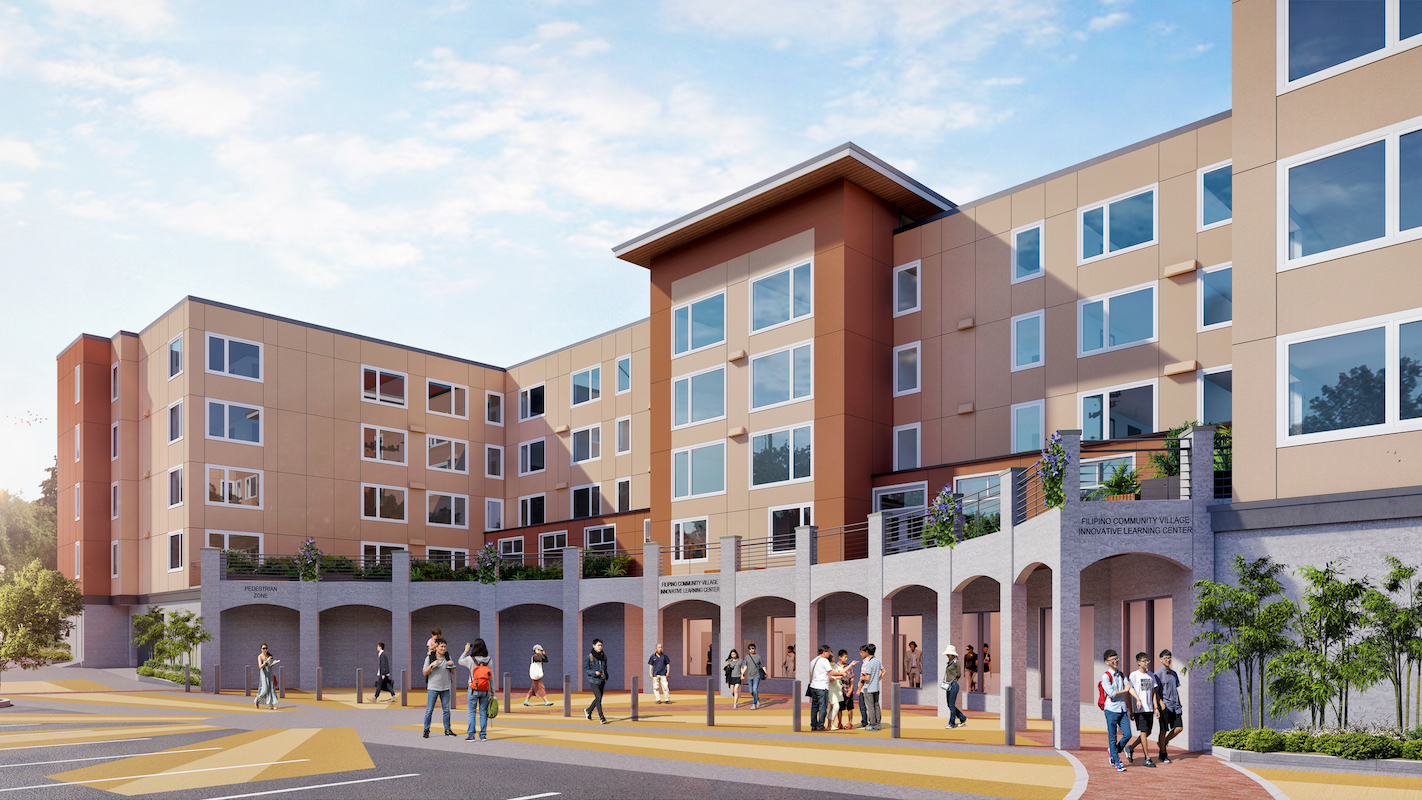
On Martin Luther King Jr. Way South in Othello sits a small yellow and blue building with a square red tile roof, and two flags flying — one representing the United States and the other representing the Philippines.
For decades, the building has been the Filipino Community Center, the headquarters and gathering place of the Filipino Community of Seattle.
But soon, three single-family houses behind the community center will give way to the Filipino Community Village of Seattle, a five-story, 95-unit, affordable senior housing building. The project is set to begin construction in August — a plan that’s been 10 years in the making.
The Village will be open to seniors 55 and older of all backgrounds who earn up to 30 percent, 50 percent and 60 percent of area median income., according to Velma Veloria co-chair of the advisory committee of the capital campaign for the housing project.
“It’s not just for the Filipino community it’s open to the general senior population,” Veloria said. “But you have to meet at least 50 percent below the average median income.”
The average Othello resident, from 2013 to 2017, had a median household income of roughly $48,000. The senior residents of Filipino Community Village will have an income of between $22,000 and $44,000 annually.
The completion of the project is expected to be in late 2020. Applications to live in the apartments will be opened closer to the completion date.
In addition to affordable senior housing, the Filipino Community Village will include roughly 4,900 square feet dedicated to an Innovation Learning Center. It will have a youth lounge, a space for a computer classes and a multi-purpose room for events like cultural dances, according to Veloria.
The learning center is set up to help promote technological literacy in the neighborhood. From 2013 to 2017, only 77 percent of Othello households owned computers.
“It was also the vision of some of the members of the community that technology is what we need to expose our children to. Because, you know, this is the age of technology and we don’t want them to fall behind” Veloria said.
In addition to computer labs, the learning center will involve a robotics program and a science-technology-engineering-arts-math (STEAM) program.
The project is projected to cost up to $30 million, though the bids for the project have not been completed yet.
Seattle-based architect Alex Rolluda is designing the project. Rolluda’s Filipino American background was an asset, Veloria said, because he was aware the nuances of the community’s culture and needs.
The building will incorporate different aspects of Filipino architecture such as original artwork on some of the exterior walls of the building and a plaza located between the existing community center and the Village. Rolluda said the plaza can act as a space for social gatherings. The design could also include capiz windows and Filipino-style ironwork, he said.
The plaza will be designed to resemble the Filipino flag, which has a sun with eight rays representing the eight Filipino provinces who rose up against the Spanish, which colonized the Philippines for 500 years, Rolluda said.
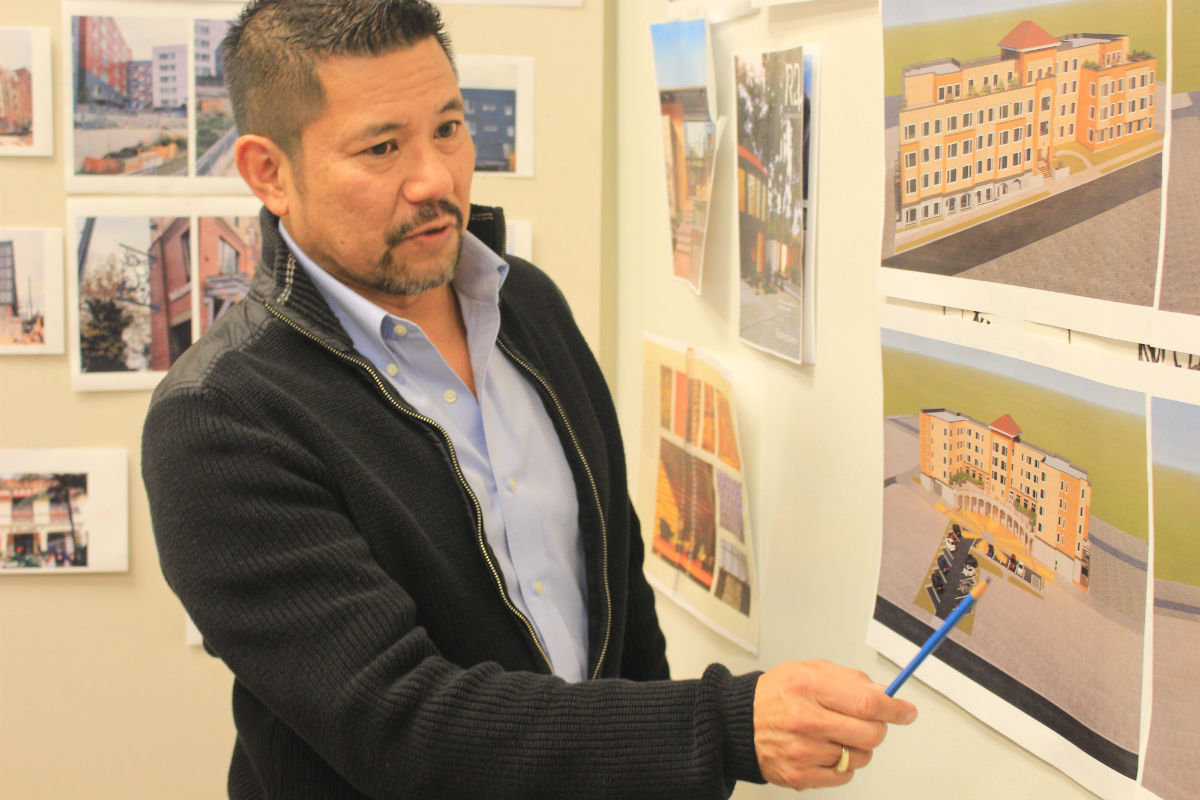
In addition, a new red tile roof on the Village will mirror the existing one on the community center, symbolizing two of the three stars representing the three major island groups on the Filipino flag, according to Rolluda.
“That leaves space for a future red roof that will represent the three island groups,” Rolluda said. “So say, if you’re flying over the community center, you’ll have this image of the Filipino flag.”
Rolluda designed the space to be a place where seniors can feel at home in their surroundings.
“We want to make seniors comfortable in their environments and a place that they are familiar with,” Rolluda said. “It’s providing places where they can socialize, where they can dance, where they can do different activities together and also eat similar foods that they’re used to.”
“I think it’s a wonderful project and as our seniors are getting older, providing them with a place they can call home is a wonderful thing,” Rolluda said.
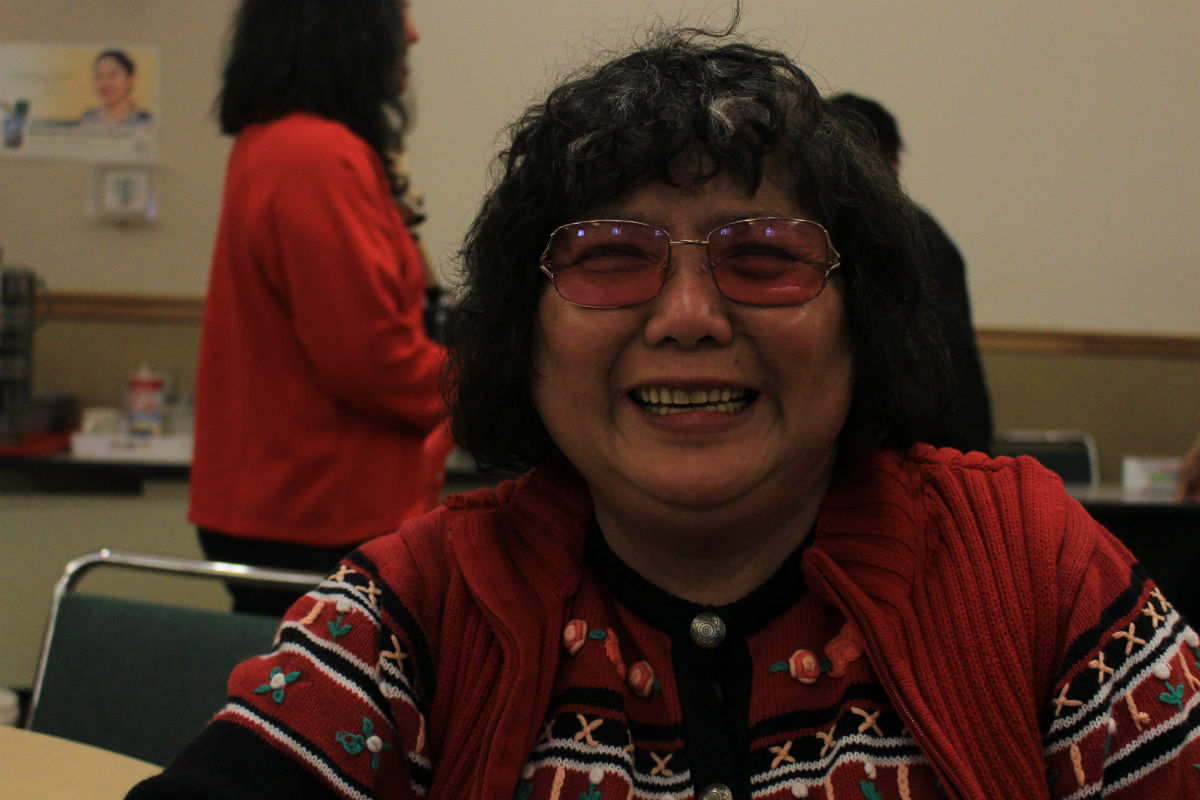
One hopeful future-resident, Violet Navarro, 72, is interested in the Village’s close proximity to the Filipino Community Center, where she has been going for many years and where she currently meets with her friends and does Zumba.
“I came here in the United States, 1967,” Navarro said. “So since I got married, my husband belonged [at the community center] so I always come here.”
At one point, Navarro lived directly behind the community center. But today she has to seek some sort of transportation to reach the center, according to Navarro.
“I wish I can stay down here because I like to be closer to the community,” Navarro said. “You know, you come over here and meet like a lot of people, exercise, the lunch is good.”
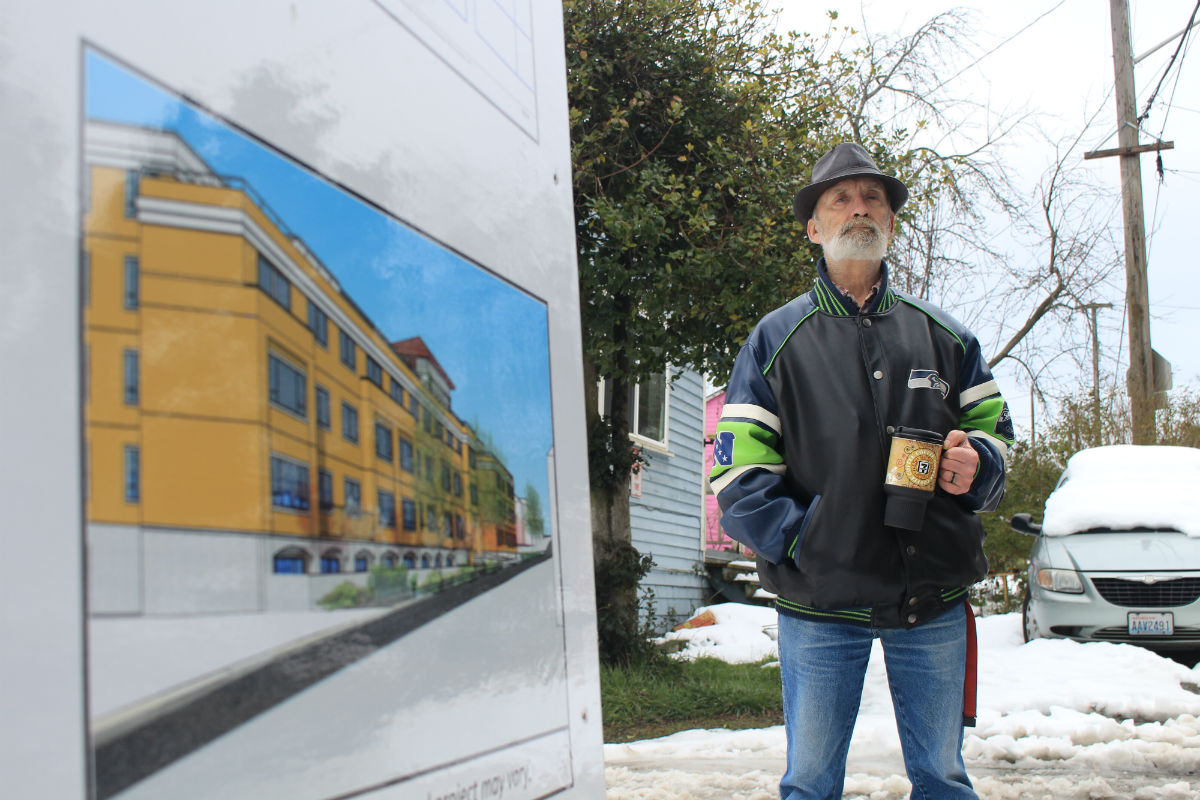
The planning of the Village has been in the works since 2009.
During its planning, the Filipino Community of Seattle underwent a shakeup of its board and structure. The organization shifted from a focus on social gatherings to being a “service-driven organization,” said Apollo Rimando, who at the time was the volunteer manager of the Filipino Community Center.
As part of that shift, the organization transitioned from holding elections for officers, to having its board members choose its officers in 2014. Not all the members agreed with the change, according to an 2015 article in the Northwest Asian Weekly.
But today, 10 years after the initial plans to provide affordable housing for seniors, the project is well on its way.
Last month, King County Councilmember Larry Gossett and County Chair Rod Dembowski presented the Filipino Community Center with $5 million dollars for the Filipino Community Village.
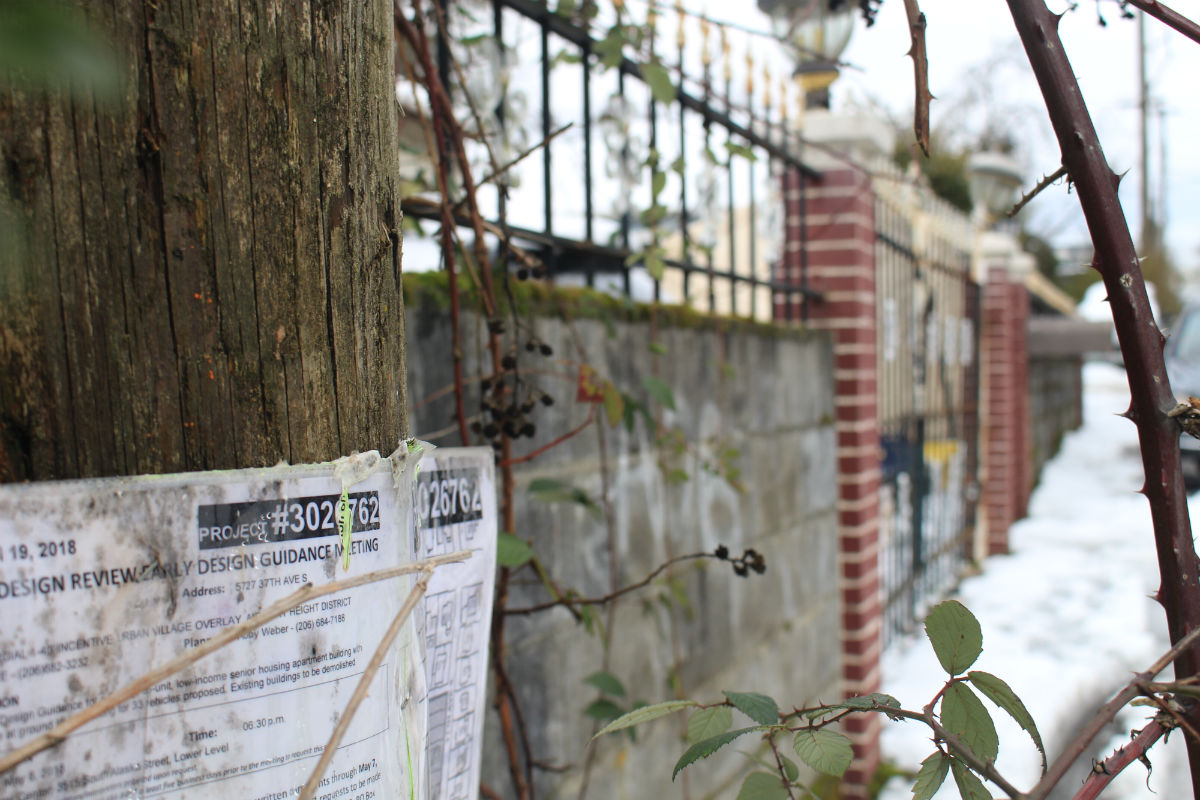
Correction: Due to updated information, several figures have changed from the original version of this story, including the estimated cost of the project, the date that the project is expected to break ground and when applications will be available.

